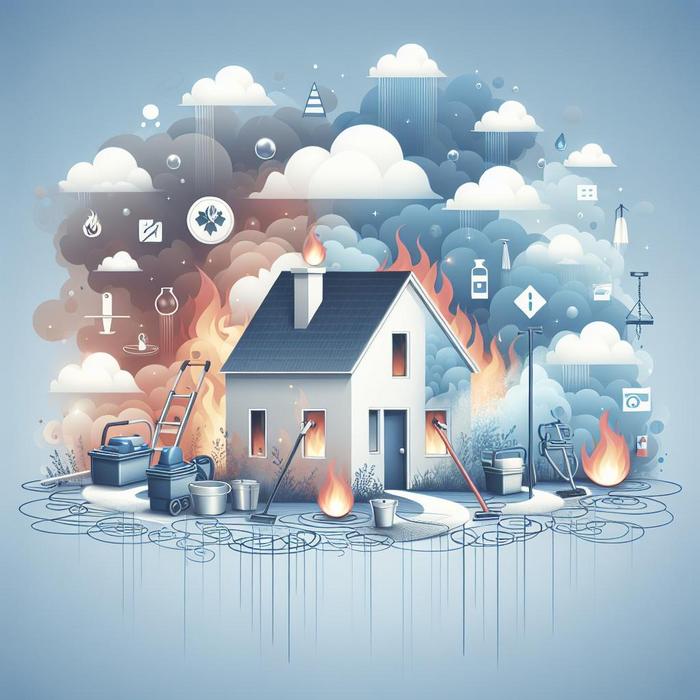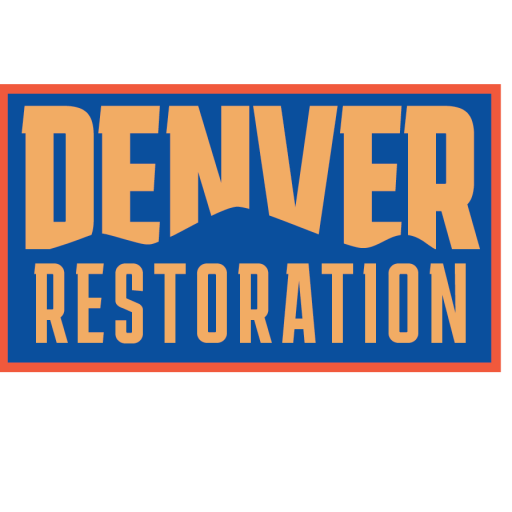Understanding the Complexity of Smoke Damage Restoration
Dealing with the aftermath of a fire is a daunting experience for any property owner. Aside from the visible damage and loss, the residual smoke poses potential health and safety hazards. Resultantly, this necessitates the involvement of professional smoke damage restoration experts who understand the intricate details of this complex process.
Smoke Damage Restoration: An In-depth Examination
Smoke damage restoration isn’t as simple as opening the windows and airing out your property. It involves rigorous cleaning, deodorizing, and restoring the structural integrity of the building. As a property owner, there are a few things you should understand about smoke damage and its implications.
Persistent Odor
The scent of smoke can linger long after the fire is put out, permeating your furniture, carpets, walls, and even the underlying structure. Moreover, the acidic nature of smoke can also result in further damage to your belongings if not addressed properly.
Health Risks
Smoke damage poses significant health risks, even after the fire has been extinguished. The residual soot and smoke contain harmful toxins and carcinogens, which can lead to respiratory ailments if inhaled.
Structural Damage
Even a small fire can weaken your property’s structural integrity. Smoke can seep into the building’s foundation, causing hidden damage that only expert inspection can reveal.
Environmental Impact
Smoke and soot residue can have serious environmental implications, contributing to air and water pollution, and affecting local ecosystems.
Necessity of Effective Smoke Damage Restoration Strategies
Given the severe consequences of improper remediation, it is evident that professional, effective strategies are crucial to ensure smoke damage restoration is completed efficiently and safely. These strategies involve damage assessment, meticulous cleaning, comprehensive deodorization, and restoration of structural integrity.
Damage Assessment and Estimation
The first step in any smoke damage restoration process is the assessment of damage. This includes identifying the type and extent of damage, mapping out affected areas and developing an appropriate remediation strategy.
Restoration Techniques and Equipment
Smoke damage restoration requires specialized equipment and methods to eliminate the pervasive scent of smoke and remove soot and burn marks. This restoration techniques include thermal fogging, ozone treatment, and HEPA filtration.
Ensuring Environmental and Health Safety
The primary objective of smoke damage restoration is to restore the property to its pre-damaged state while maintaining environmental and health safety. This entails stringent safety protocols to eliminate hazardous toxins and prevent further contamination.
Ensuring Insurance and Legal Compliance
It is crucial to adhere to all insurance and legal stipulations during the restoration process. Professional restoration services have extensive knowledge of these regulations, ensuring that your claims process goes smoothly.
With the correctly implemented strategies, the chaos left in the wake of a fire can be successfully overcome, restoring your property to its original state, or even improving upon it. These methods are crucial, and by understanding the complexity of smoke damage restoration, property owners can have confidence in the restoration process.
Uncloaking the Various Types of Smoke
Smoke damage can occur from various types of fires, each leaving a different residue and requiring specialized cleaning methods. The three main types of smoke include wet smoke, dry smoke, and protein residue smoke.
Wet Smoke
Wet smoke is often the result of smoldering, low-heat fires. The particles in wet smoke are narrowly distributed and deeply penetrate porous surfaces. Wet smoke damage can be difficult to clean and usually leaves a distinct, pungent smell.
Dry Smoke
Dry smoke mainly results from high-temperature, fast-burning fires. It leaves a fine, powdery non-smeary residue. Compared to wet smoke, dry smoke damage is much easier to clean, but can reach deeper into structures due to its finest particle size.
Protein Residue Smoke
Protein residue smoke is primarily produced from the burning of proteins like meat or poultry. This kind of smoke damage is usually not visible but can cause discoloration on painted surfaces over time and has a strong offensive odor.
Professional Smoke Damage Restoration: The Way Forward
Fire incidents demand prompt actions, and smoke damage restoration is no exception. The immediate engagement of professional restoration services helps mitigate the long-term consequences of a fire. With their years of field experience and technical training, they can tackle the restoration process professionally and adequately.
Customer Communication and Crisis Management
Communication is crucial during the restoration process. A restoration expert plays a fundamental role in guiding property owners through the crisis. They explain the restoration strategy, timelines, and eventual outcomes, assuaging customer concerns, and managing expectations.
Latest Tools and Technology
Professional restoration services employ the latest restoration equipment and technology, such as infrared cameras, moisture meters, and industrial strength dehumidifiers. These devices make the restoration process more effective and efficient.
Skilled Staff
Experts engaged in smoke damage restoration are typically highly trained, holding different certifications that mark their competencies. They have experience dealing with a variety of smoke types and the best remediation techniques for each.
Focus on Prevention
Once the restoration process has been completed, the objective shifts to prevention. This means: Annual inspections, implementation of fire safety measures, adherence to building codes, and fire damage awareness education designed to avoid repeat incidents.
Revisiting Insurance After Smoke Damage
Smoke damage restoration can be expensive, a cost most property owners might not be ready to absorb. Therefore, adequately understanding insurance coverage is beneficial to homeowners.
Insurance typically covers the cost of clean-up and restoration, alternative living expenses, property replacement, and often even counseling services in the unfortunate event of a fire. It is crucial to monitor insurance policies regularly to ensure sufficient coverage is in place. Consulting with a professional can help ensure homeowners can achieve the utmost assurance from insurance policies.
To conclude, understanding smoke damage restoration is fundamental for any property owner. It helps to comprehend the extent and implications of smoke damage while ensuring that restoration processes are handled efficiently and appropriately. It also empowers you to choose the best restoration services to guide you through these trying times. Armed with this knowledge, you can make informed decisions to protect your health, environment, and property.
After you’ve experienced fire or smoke damage in your home, no matter how big or small, it can be overwhelming and devastating. It can take anywhere from a few days to several months to fully recover, and even then, some signs may still be there. However, with professional fire and smoke restoration services, you can restore your home as closely as possible to its original state.
Irrespective of the damage, professional services prioritize your safety and satisfaction by providing effective and efficient smoke damage restoration. Emotional factors are, of course, a significant concern, but don’t shy away from seeking help from professionals right after a fire incident. They have experience in dealing with scenarios like this and making the process easier for you to handle. Remember, smoke damage restoration isn’t only about restoration, but it’s your step towards normalcy. After all, ensuring the safety and well-being of everyone inhabiting the property is of utmost importance.

